HOW TO GROW AND PREPARE ASPARAGUS
Tender asparagus is a spring treat that’s easy to grow—plant 1-year-old crowns in a sunny spot with plenty of compost. Cooking with fresh asparagus opens up a world of culinary possibilities!
![]()
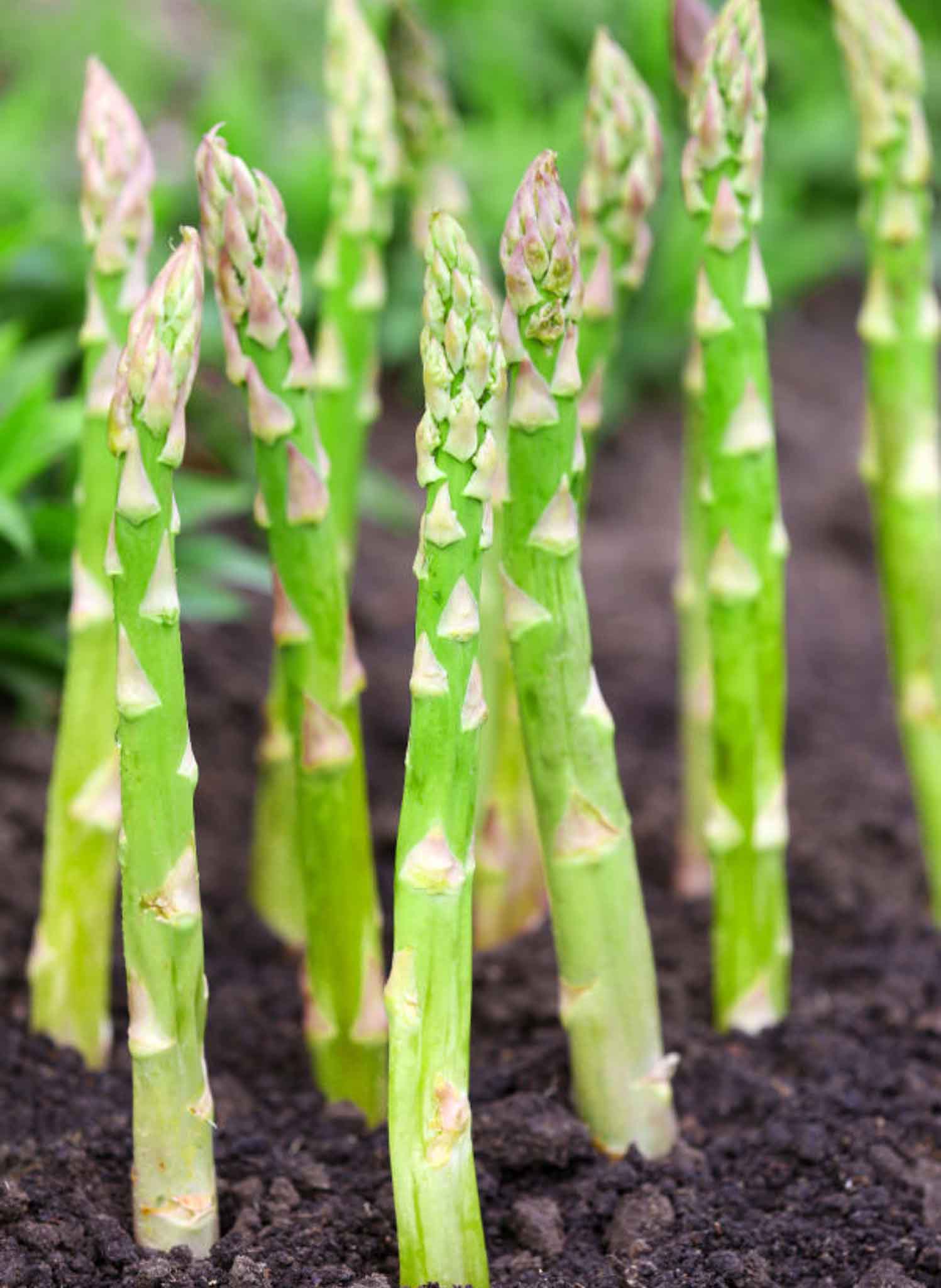
In the world of vegetables, there is one that stands tall, slender, and elegant, captivating both the eye and the palate. Meet fresh asparagus, a culinary gem that exudes a unique charm. Imagine walking through a sun-kissed garden, where vibrant green spears emerge from the earth, reaching towards the sky. As you pluck a spear of fresh asparagus, its tender texture and delicate flavor awaken your senses, inviting you to embark on a culinary journey like no other.
Fresh asparagus offers a feast for both the eyes and the taste buds. Its vibrant green color, tinged with hints of purple, adds a touch of elegance to any dish. With each bite, you experience a delightful combination of flavors – a hint of sweetness followed by a subtle earthiness. The crisp yet tender texture provides a satisfying crunch, while the subtle bitterness adds depth and complexity. Fresh asparagus is not just a vegetable; it is an experience that transports you to a world of culinary delight.
You can see my Spring garden layout (including basil), seed choices, and each planting here in the Garden to Table section.

Reasons You’ll Love Growing Asparagus
Here are a few – all very beautiful and visually appealing!
-
- Unique Flavor Profile – Fresh asparagus boasts a distinct, delicate, and robust flavor. Its natural sweetness is complemented by earthy and slightly bitter undertones, creating a harmonious taste, unlike any other vegetable.
- Versatile Culinary Ingredient – Fresh asparagus is incredibly versatile, lending itself to various dishes. Whether roasted, grilled, steamed, or sautéed, asparagus adds a delightful and vibrant element to salads, stir-fries, pasta, risottos, and more.
- Nutritional Powerhouse – Asparagus is packed with essential nutrients, including vitamins A, C, E, and K, folate, fiber, and antioxidants. It is a low-calorie vegetable with numerous health benefits and supports overall well-being.
- Seasonal Delight – Fresh asparagus is a herald of spring, signaling the arrival of warmer days and abundant harvests. Enjoying this vegetable during its peak season allows you to savor its freshness and maximize its flavor.
- Culinary Prestige – Fresh asparagus has long been regarded as a gourmet ingredient, adorning the plates of fine dining establishments. Incorporating it into your home-cooked meals brings a touch of culinary sophistication to your table.
Growing asparagus in your garden has many advantages, from the aromatic pleasure it brings to the wide range of culinary possibilities it unlocks. Whether you’re a seasoned gardener or a beginner, growing asparagus is a gratifying experience that combines practicality, aesthetics, and flavor. So, roll up your sleeves, dig into the soil, and embark on a journey of growing and preparing asparagus that will reward you with a bountiful harvest and a deeper connection to nature’s gifts.
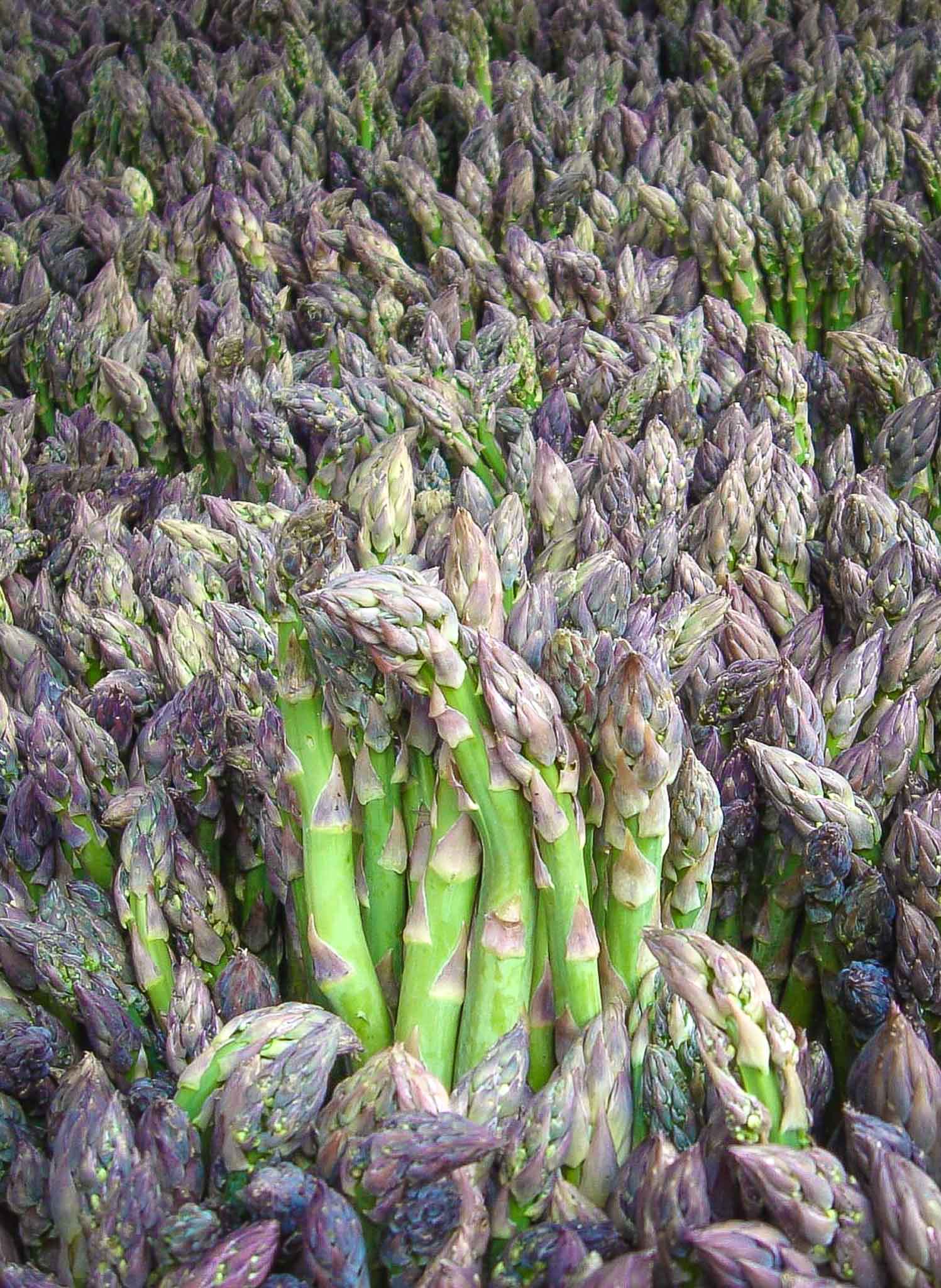
Popular Varieties of Asparagus
Here are some easy-to-grow varieties of asparagus.
-
- Culinary Skills – Fresh asparagus has long been regarded as a gourmet ingredient, adorning the plates of fine dining establishments. Incorporating it into your home-cooked meals brings a touch of culinary sophistication to your table.
- Green Asparagus – The most common variety, green asparagus, features vibrant green spears with a subtle hint of purple at the tips. It offers a balanced flavor profile and is widely available in markets and grocery stores.
- White Asparagus – White asparagus is grown underground, away from sunlight, resulting in its pale color. Its flavor is milder and slightly sweeter than green asparagus. It is popular in European cuisine and prized for its tender texture.
- Purple Asparagus – Purple asparagus is a visually striking variety with deep purple spears that turn green upon cooking. It has a sweeter and more intense flavor than green asparagus, making it a unique dish addition.
I’ve experimented with growing these varieties of asparagus in my kitchen garden. However, green asparagus is one I go back to every year without fail!
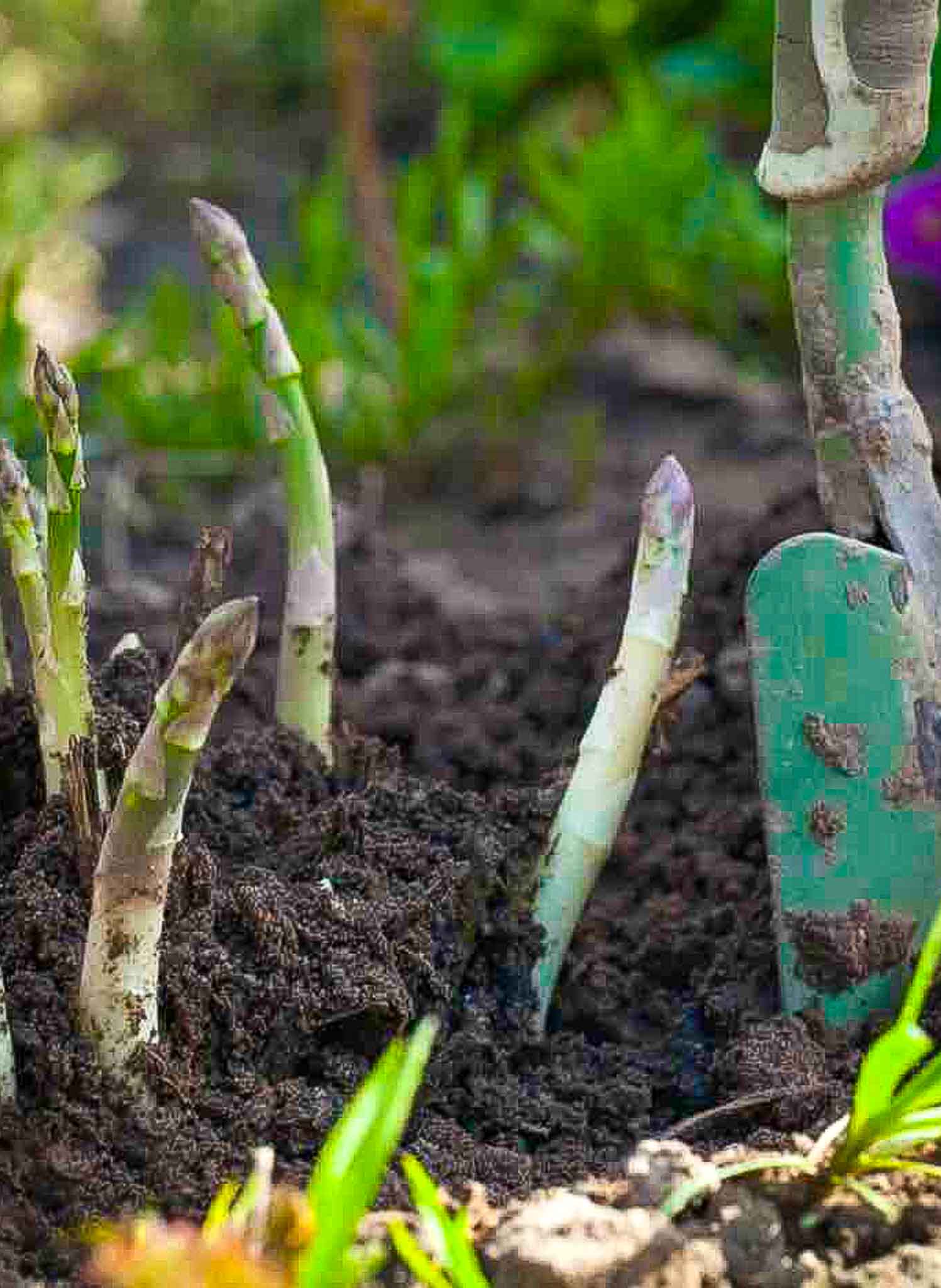
How to Grow Asparagus
Asparagus is easy and fun to grow!
-
- Choose the Right Location – Asparagus thrives in well-drained soil and requires a sunny spot in the garden. Prepare the soil by removing weeds and incorporating organic matter to improve fertility.
- Planting Asparagus Crowns – Plant asparagus crowns in trenches about 8-10 inches deep and 12-18 inches apart. Place the crowns at the bottom of the trenches, covering them with a few inches of soil.
- Gradual Soil Filling – As the asparagus plants grow, gradually fill in the trenches with soil, ensuring that the emerging spears are covered but the foliage remains exposed.
- Watering and Fertilizing – Asparagus requires consistent moisture, especially during the growing season. Water deeply, but avoid overwatering, as excessive moisture can lead to root rot. Apply a balanced fertilizer in early spring and after the harvest to provide essential nutrients.
- Patience and Maintenance – Asparagus is a perennial plant that takes time to establish. Be patient during the first few years as the plants develop strong root systems. Control weeds and protect the asparagus bed from invasive plants that can compete for nutrients and space.
Growing asparagus requires patience, as it typically takes around two to three years from the time of planting for the asparagus crowns to establish a strong root system and produce a harvestable crop. During the first year, it is essential to allow the plants to develop without harvesting. In the second year, you may harvest lightly, and by the third year, you can expect a more substantial harvest lasting for several weeks in the spring. With proper care and maintenance, asparagus plants can continue to produce a bountiful harvest for many years to come.

Asparagus Pests and Bugs
Asparagus can be susceptible to certain pests and bugs.
-
- Asparagus Beetle: Asparagus beetles are common pests that feed on asparagus foliage, causing defoliation and potential crop loss. Handpick adult beetles and larvae and destroy them. Introduce beneficial insects, such as ladybugs and lacewings, to control the population.
- Slugs and Snails: These slimy creatures can damage asparagus spears and foliage. Protect your plants by using organic slug and snail control methods, such as diatomaceous earth or beer traps.
- Wireworms: Wireworms are the larvae of click beetles and can attack asparagus roots, causing stunted growth and yield reduction. Practice crop rotation and avoid planting asparagus in areas with a history of wireworm infestation.
Regularly inspect your asparagus plants for any signs of pests or diseases. Taking preventive measures such as proper watering, providing good airflow, and maintaining overall plant health can help minimize pest and disease issues. If an infestation becomes severe, consider using organic pest control methods or consult with a local gardening expert for further assistance.
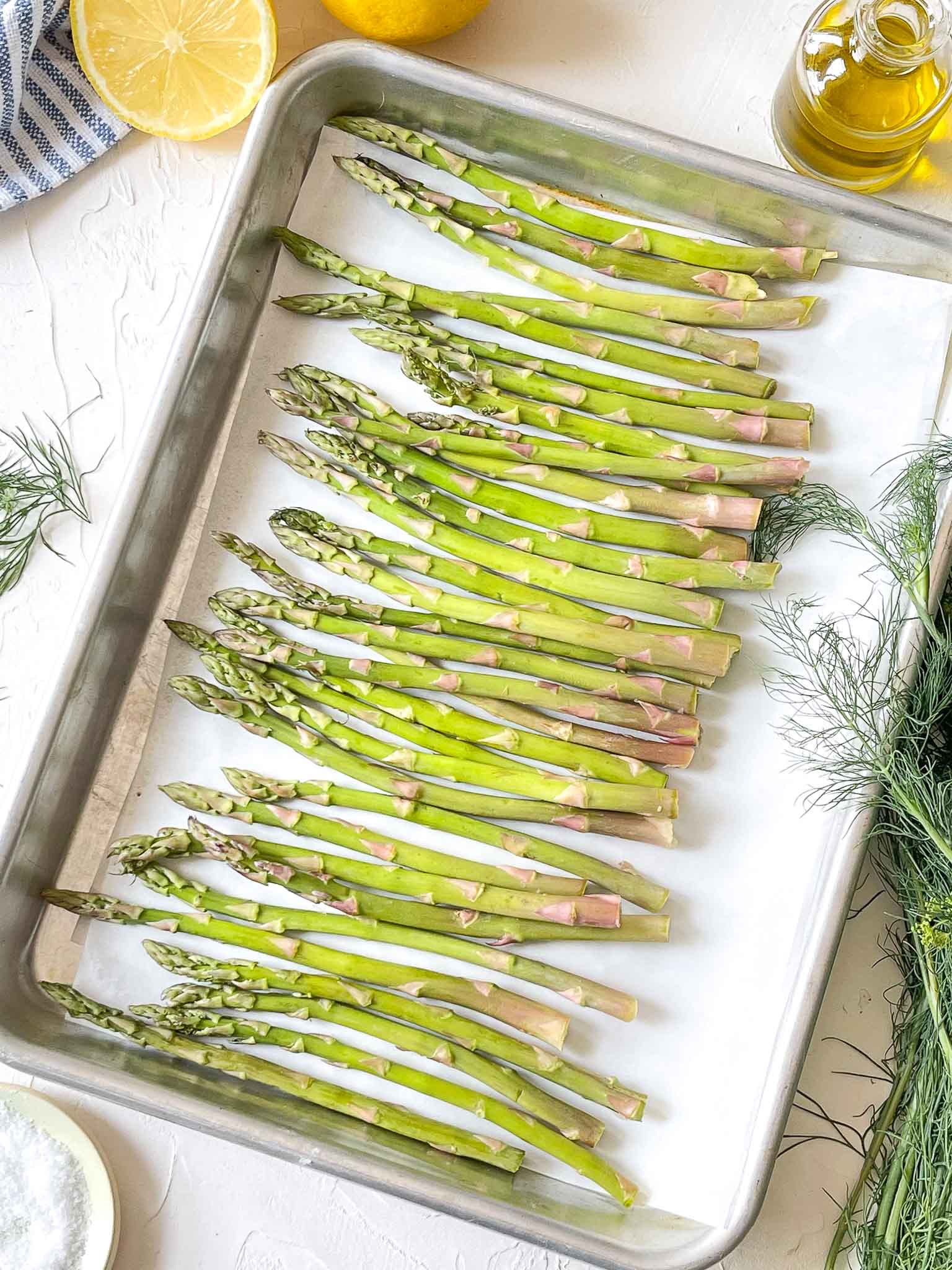
How to Prepare Fresh Asparagus
Preparing asparagus is quite easy!
-
- Washing: Rinse fresh asparagus under cold water to remove dirt or debris. Trim the tough ends by gently bending the spears until they naturally snap at the point where they become tender.
- Cooking Methods: Fresh asparagus can be cooked using various methods, including roasting, grilling, steaming, or sautéing. Each technique brings out different flavors and textures, so experiment to find your preferred cooking style.
- Flavor Enhancements: Enhance the flavor of fresh asparagus by drizzling it with olive oil, sprinkling it with salt and pepper, or adding a squeeze of lemon juice. Experiment with additional seasonings and spices to suit your taste.
- Doneness Test: Cook the asparagus until it is tender but has a slight crunch. Piercing it with a fork should meet little resistance. Overcooking can result in limp and mushy spears.
Once trimmed, there are various cooking methods to choose from based on your preferences. For a simple and elegant approach, lightly steam the asparagus spears until they are tender yet still crisp. This method helps to retain their vibrant green color and delicate flavor.
You can roast the asparagus in the oven with a drizzle of olive oil, a sprinkle of salt and pepper, and any additional seasonings you choose. Roasting brings out a slightly nutty flavor and caramelizes the tips, resulting in a more intense taste. Whether steamed, roasted, grilled, or sautéed, the key is to cook the asparagus until it is tender but still retains a slight crunch, allowing its natural qualities to shine.

How to Store Fresh Asparagus
Asparagus is best served fresh, but it can be canned or frozen.
-
- Fresh – Asparagus is not typically dried like other herbs. It is best enjoyed fresh or preserved by freezing or canning.
- Freezing – Blanch fresh asparagus spears in boiling water for a couple of minutes, then transfer them to an ice bath to halt the cooking process. Drain and pat them dry, then store them in airtight containers or freezer bags for long-term storage.
- Canning – Asparagus can also be preserved by canning it. Follow proper canning procedures to ensure safety and maintain the quality of the asparagus.
Properly storing asparagus allows you to enjoy its fresh flavors beyond peak season. One method is freezing: start by blanching the asparagus spears in boiling water briefly, then transferring them to an ice bath to halt the cooking process. Drain and pat them dry before storing them in airtight containers or freezer bags. This technique preserves the vibrant green color and retains much of the vegetable’s texture and taste. Another option is canning: follow proper canning procedures to safely preserve asparagus. This typically involves packing blanched asparagus spears into sterilized jars and covering them with a brine or pickling solution. With these storage methods, you can savor the flavors of asparagus throughout the year, even when it’s not in season.
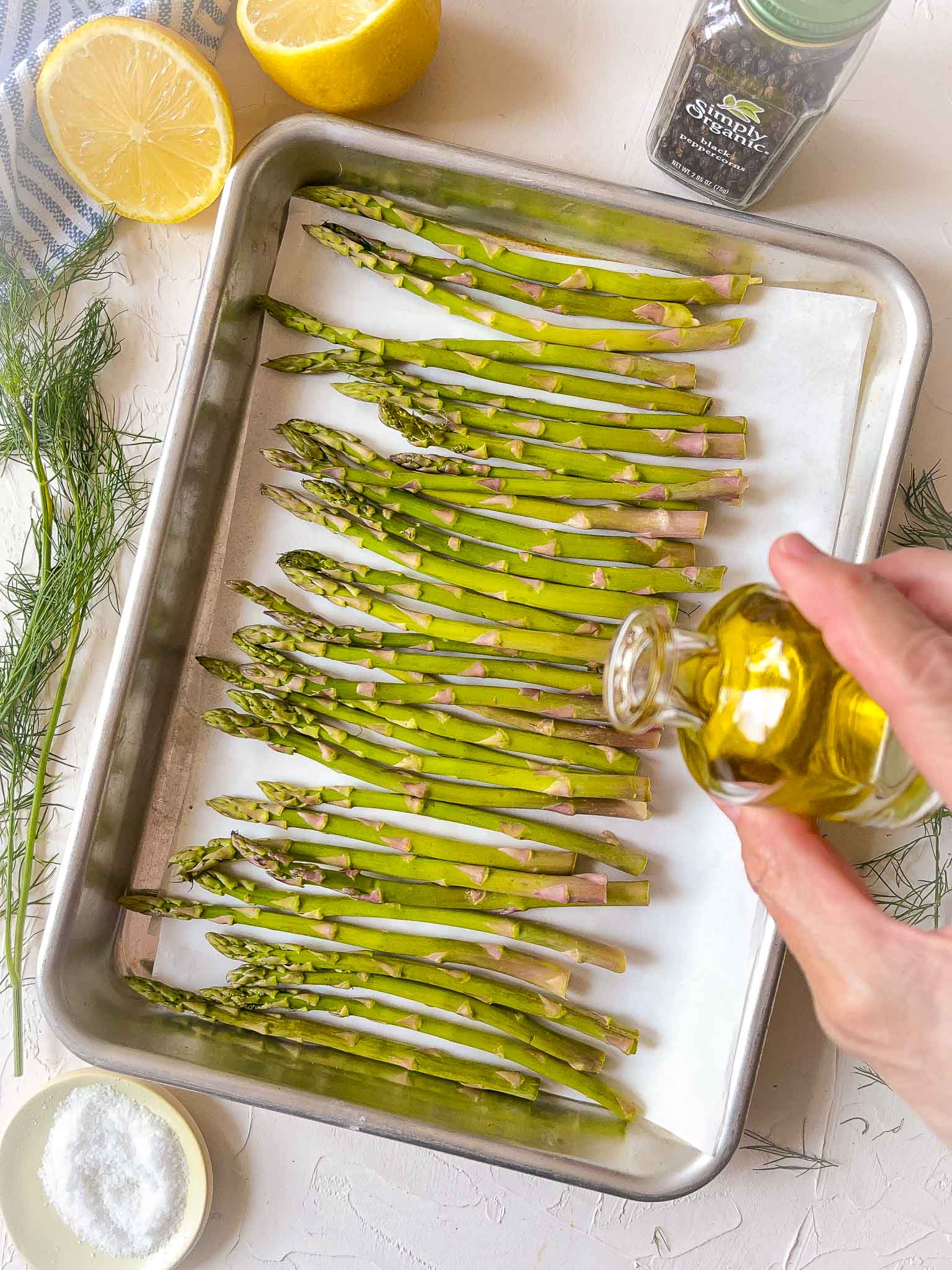
Serving Suggestions for Asparagus
Simple to prepare and wonderfully delicious!
-
- Roasted Asparagus – Roasted asparagus is a Spring favorite and is an excellent side dish.
- Grain Bowls – Roasted asparagus makes a perfect addition to any grain bowl.
- In a salad – On a wonderful salad such as my baby beet green salad.
If you decide to grow your own asparagus or try any of these recipes, please let us know in the comments below!
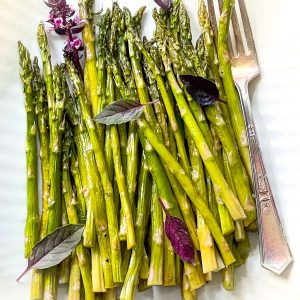
Roasted Asparagus
Ingredients
- 2 bunches fresh asparagus
- 1/8 cup extra virgin olive oil
- 1 medium lemon (zested)
- 1/4 fresh basil (we used purple)
- sea Salt
- freshly ground pepper
Instructions
- Preheat the oven to 425°F (220°C) – Set your oven to this temperature to ensure it reaches the optimal heat for roasting the asparagus.
- Rinse a bunch of fresh asparagus under cold water and trim off the tough ends – Wash the asparagus spears under cold water to remove any dirt or debris. Then, using a sharp knife, cut off the tough ends of the spears, usually about 1-2 inches from the bottom.
- Place the asparagus on a baking sheet lined with parchment paper -Line a baking sheet with parchment paper to prevent the asparagus from sticking and to make cleanup easier. Place the trimmed asparagus spears on the prepared baking sheet in a single layer.
- Drizzle olive oil over the asparagus, ensuring its evenly coated – Drizzle a generous amount of olive oil over the asparagus spears, ensuring each one is coated. The oil helps to enhance the flavor and aids in the roasting process
- Sprinkle minced garlic, lemon zest, salt, and black pepper over the asparagus – Evenly distribute the minced garlic, lemon zest, salt, and black pepper over the asparagus. These seasonings add additional layers of flavor to the dish, complementing the natural taste of the asparagus.
- Toss the asparagus gently to distribute the seasonings – Using your hands or tongs, toss the asparagus gently to ensure the seasonings are evenly spread, and coat the spears thoroughl.
- Spread the asparagus in a single layer on the baking sheet – Arrange the asparagus spears in a single layer, ensuring they are not overcrowded on the baking sheet. This allows for even roasting and ensures that the asparagus cooks properly.
- Roast in the preheated oven for 12-15 minutes, or until tender and slightly crispy – Place the baking sheet with the asparagus in the preheated oven and roast for about 12-15 minutes, or until the asparagus is tender and slightly crispy. Cooking times may vary, so keep an eye on them to avoid overcooking.
- Carefully remove from the oven and transfer to a serving dish – Once the asparagus is roasted to perfection, remove the baking sheet using oven mitts or kitchen towels to protect your hands. Transfer the roasted asparagus to a serving dish or plate.
- Serve hot and enjoy the irresistible flavors of roasted asparagus – The roasted asparagus is best enjoyed immediately while it is still hot. Serve it as a side dish or incorporate it into your favorite recipes. Relish the irresistible flavors of the tender and slightly crispy asparagus spears.


0 Comments